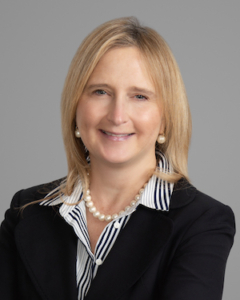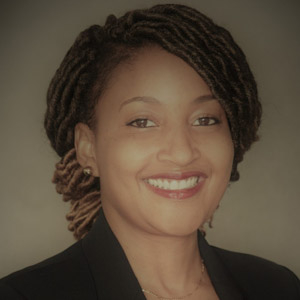 “I wish I’d known earlier on that you don’t have to be linear in your career,” says Katten’s Christina J. Grigorian. “If something is pulling you in a different direction, there are firms out there that will support those interests or needs.” And, she says, she was fortunate to find that you don’t have to follow a traditional trajectory on the partner track to have a fulfilling career.
“I wish I’d known earlier on that you don’t have to be linear in your career,” says Katten’s Christina J. Grigorian. “If something is pulling you in a different direction, there are firms out there that will support those interests or needs.” And, she says, she was fortunate to find that you don’t have to follow a traditional trajectory on the partner track to have a fulfilling career.
Forging a Path Paved with Balance
During law school at the University of Maryland, Grigorian served as the student editor-in-chief of “The Business Lawyer,” which at the time was the largest law journal in circulation and published in conjunction with the American Bar Association. After passing the bar, she went directly to a firm where she discovered how much she loved the banking side of law, and after six years practicing with two other firms, has been with Katten for 18 years. During her tenure, she has worn many hats, including associate, contractor, senior associate, then counsel and partner in the firm’s Corporate practice.
The road wasn’t smooth, she acknowledges. When she started a family, she initially doubted whether she could juggle three children with her high-powered work and considered a leave. Fortunately, Katten was solution-oriented and offered her a reduced schedule of 10 to 15 hours a week working remotely as a contractor.
As her youngest child transitioned to preschool, she started working three mornings a week in the office and then further increased her hours when her youngest child began elementary school. Although it took her 21 years to become a partner, she did it on her own terms. “I have been very fortunate that I could walk a path that was both professionally and personally fulfilling,” Grigorian says.
Even today, she makes sure that her family demands do not interfere with her work responsibilities at the firm. “I never say ‘no’ to any project – the only question I may raise is with respect to timing,” she says, adhering to a flexible schedule that often had her rounding out her work in the evening while her children did their homework. “I have found this willingness has led to a lot of credibility that I will come through and the work will get done.”
Expanding a Welcome Niche
The enactment of the Dodd-Frank Act in 2010 brought new financial reforms and regulations for lenders and banks, creating enormous demand for an attorney like Grigorian who has an extensive background in banking law. It opened opportunities for her practice to flourish and evolve to now where she advises banks, bank holding companies, and state-licensed consumer and commercial lenders to ensure they are complying with applicable laws related to providing consumer or commercial credit.
This specialty allows Grigorian to work with a wide variety of teams as she can parlay her knowledge of banking and consumer and commercial lending law to a variety of deals and transactions.
“I am proud that I’ve been able to grow professionally in a way that allows me to be a resource to support so many teams,” she says. That ability came into sharp focus when the CARES Act passed earlier this year; her background allowed her to jump in to help clients understand the guidelines of the Paycheck Protection Program, which provides small businesses with funding to cover payroll costs, rent and utilities.
“It was amazing to join forces with so many people across the firm and help clients from bakeries to doctor’s offices to nonprofits determine if they were eligible to apply. It was such a wonderfully collaborative effort for these companies that really needed the lifeline,” she says, adding that it was a welcome spot in her practice to spend so much time with different types of clients and partners.
Balancing Work With Other Interests
The company you keep is as important as the work, Grigorian believes, meaning you must seek out those with whom you enjoy spending time. Through the years, she has had mentors who have been good role models with their work-life balance, along with being active in their communities, and she was able to model her career path in that view. She shares those lessons with others as an active participant in the Women’s Leadership Forum in Katten’s Washington, D.C. office, which has been a good outlet for her fellow female colleagues with its dynamic programming that offers everything from networking events to professional development programs.
Active in her community, Grigorian enjoys her volunteer work with the Washington National Cathedral, where she supports its horticulture projects, including recent efforts to create a bee sanctuary. “I adore this group of people who are dedicated to this mission to provide a haven to reflect and relax on the stunning Cathedral grounds located in DC’s urban core,” she says. “And in these times, it’s more important than ever.” In addition to her volunteer work, she enjoys traveling with her husband and children and reading her book club’s monthly selections.









 It is December already so time for the annual Year in Review 2015 piece that looks at the progress, of the professional woman at work in the macro and micro sense. On a general level and where we can measure stats for boardrooms and management numbers, I have to report very little progress. However, on a company-specific level, some firms get it and are doing a great job at a comprehensive plan to tackle the issue of having a representation of women at all levels. Citi have just announced the addition of two more women to their Board for 2016- congrats to
It is December already so time for the annual Year in Review 2015 piece that looks at the progress, of the professional woman at work in the macro and micro sense. On a general level and where we can measure stats for boardrooms and management numbers, I have to report very little progress. However, on a company-specific level, some firms get it and are doing a great job at a comprehensive plan to tackle the issue of having a representation of women at all levels. Citi have just announced the addition of two more women to their Board for 2016- congrats to